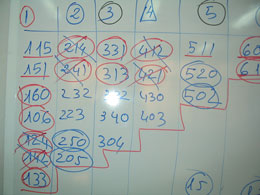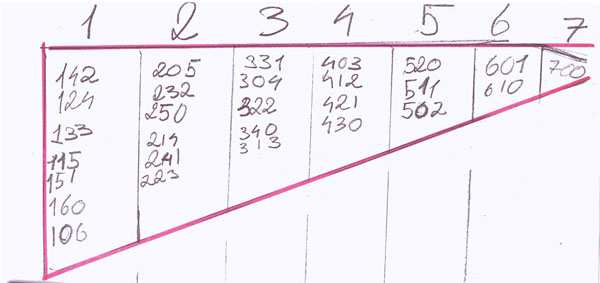 PATTERNS IN DIGITS
PATTERNS IN DIGITS 
Age:
7 - 12 years old
Lesson 1: Digits which add up to seven
Aims:
· To describe patterns in calculation.
· To see the difference between number and digit.
· To organize data efficiently.
Materials:
· Pencils, whiteboard marker and a whiteboard
Vocabulary:
· Number and digit
Introduction:
The teacher asks the pupils three-figure numbers whose digits add up to seven.
The pupils suggest numbers and the teacher writes them on the whiteboard in the following way: writing the numbers beginning with 1 in the first column, those beginning with 2 in the second column, etc...
Main part:
Different questions may arise during the activity such as: can we repeat digits? Can we begin a number with 0?. If no questions arise spontaneously, the teacher helps the pupils to think of them.

Round up:
Once the table has been completed on the whiteboard the pupils copy it in their notebooks.

Lesson 2: Analysing the table
Aims:
· To discover the patterns hidden in the table and to justify them.
Vocabulary:
· Odd and even

